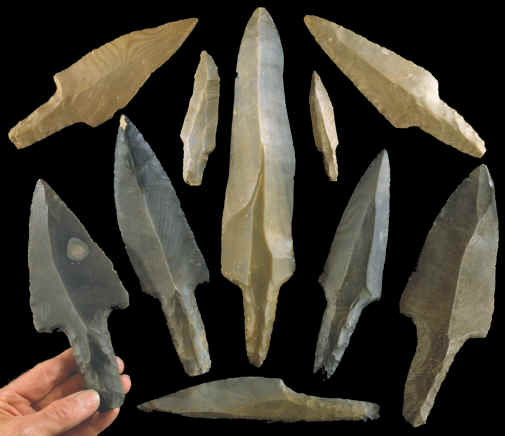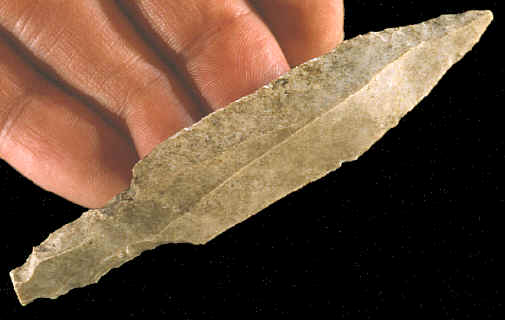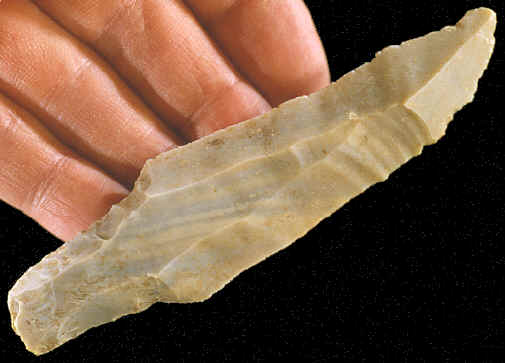|
|
|
Stemmed macro blades are sometimes referred to as "daggers," "Mayan daggers," "macro blade daggers" and even "tanged macro blades." In the archaeological literature the term stemmed macro blade is used for the large stemmed blades and stemmed blades is the term used for the smaller projectile points. |
|
|
The production of large macro blades (without stems) apparently originated in Archaic times in northern Belize, at such sites as the Sand Hill quarry near Belize City. By the Early and Middle Preclassic Periods, from 1500 to 250 B.C., points were sometimes being made on the ends of some of the macro blades. |
|
|
|
|
Stemmed macro blades do not become common until the Late Preclassic Period between 250 B.C. to A.D. 250. Although large specimens continue to be made through the Early Classic and into the Late Classic Periods between A.D. 600 to A.D. 900, there is a tendency for them to be smaller through time. Large stemmed macro blades from the Late Classic period have been found in ritual caches. |
|
|
During the Terminal Classic Period, sometime between A.D. 800 to A.D. 900, atlatl thrown spears were introduced at a time when warfare became most violent. Production of much smaller stemmed blades began to be produced by the tens of thousands to tip the ends of atlatl thrown spears. |
|
| CONTINUE ON TO PAGE FOUR | |
|
"REFERENCES"
1965, Willey,
Gordon R., Bullard, William R., Glass, John B & Gifford, James C., "Prehistoric Maya Settlements in the Belize Valley,"
pp. 412, 416-418. |
|



